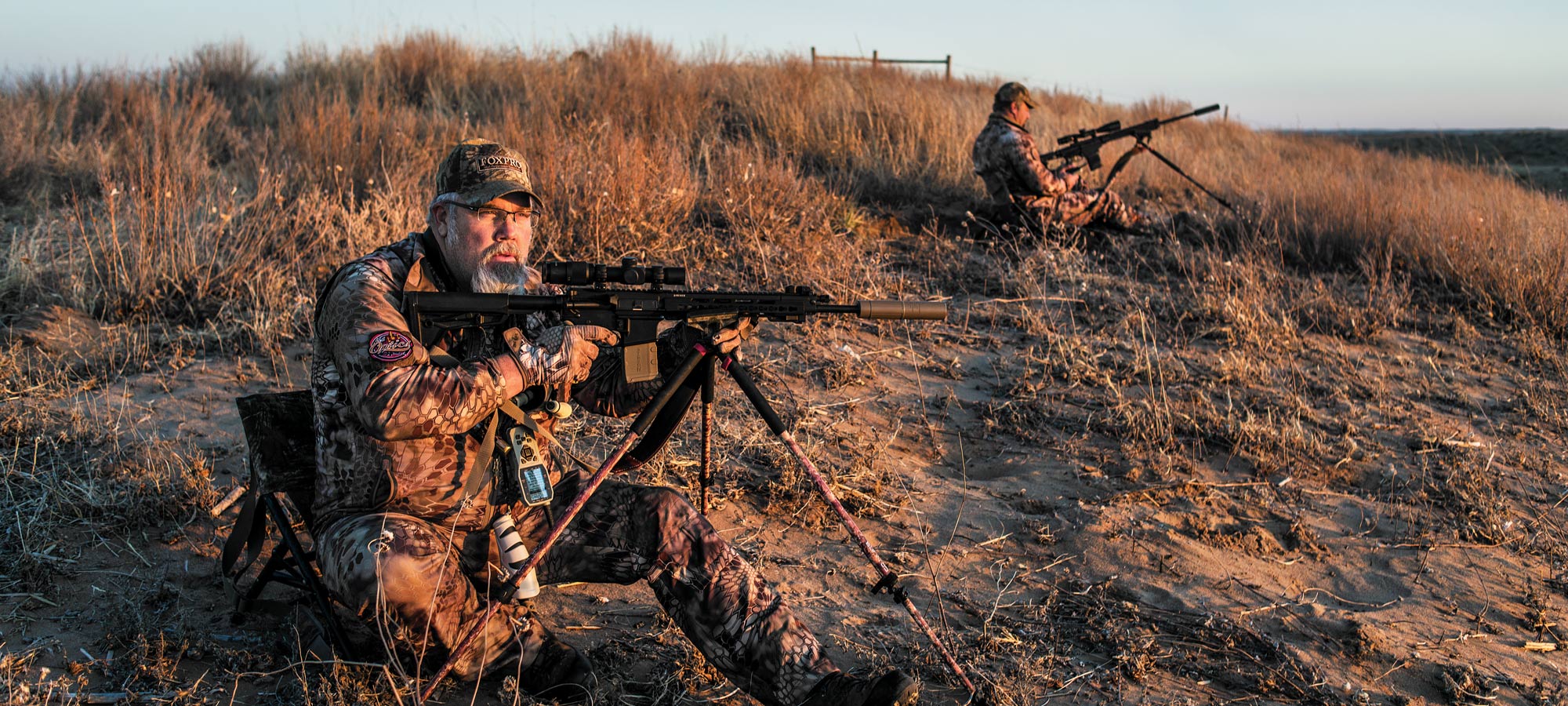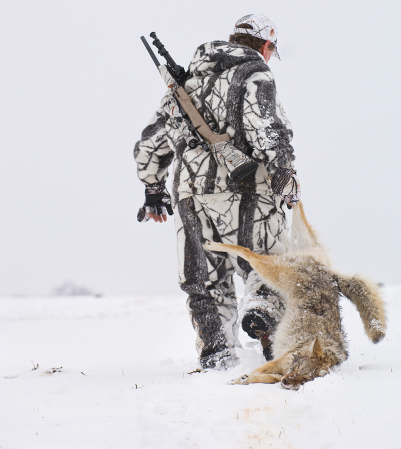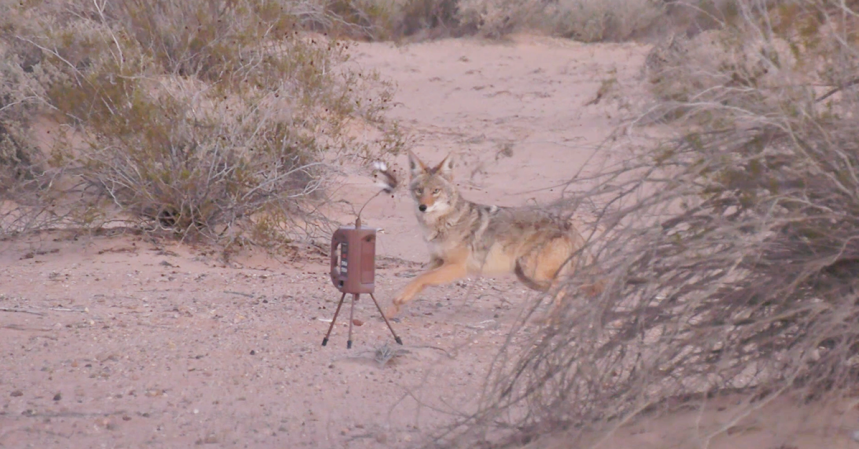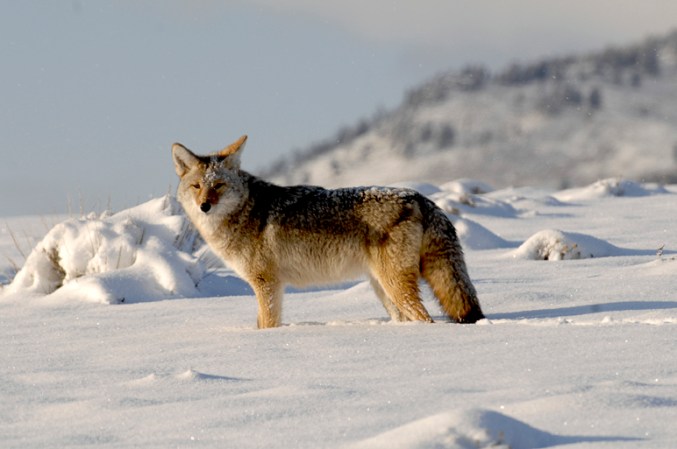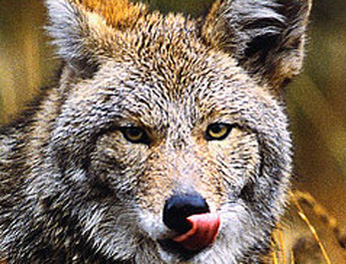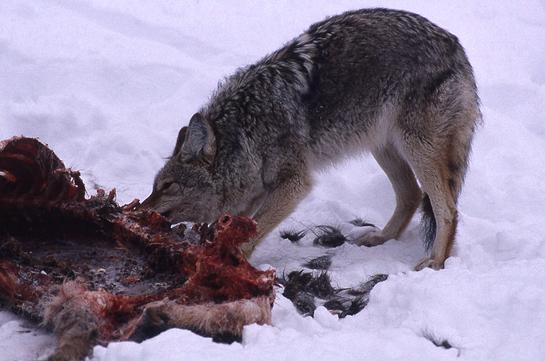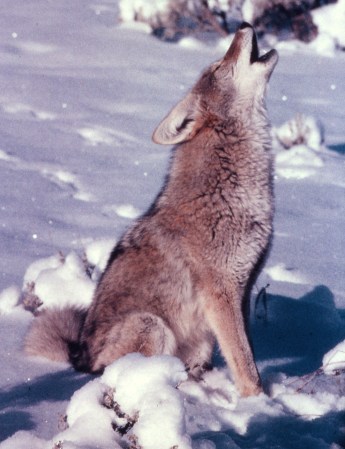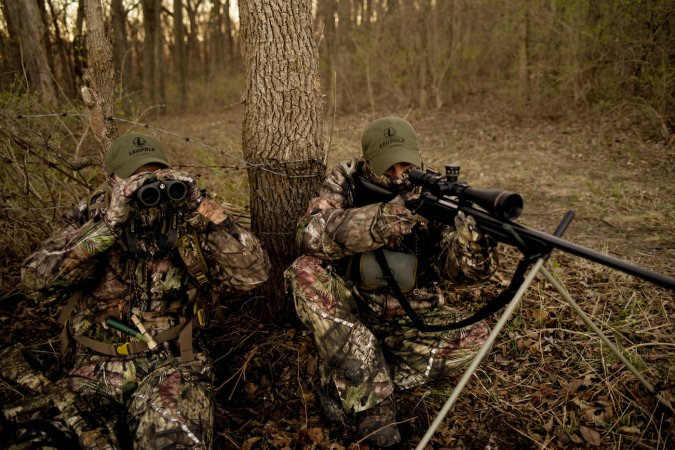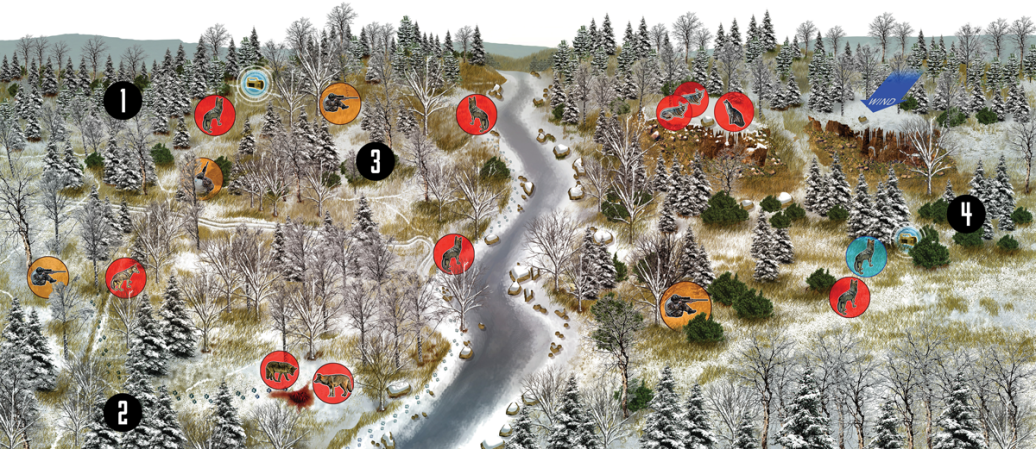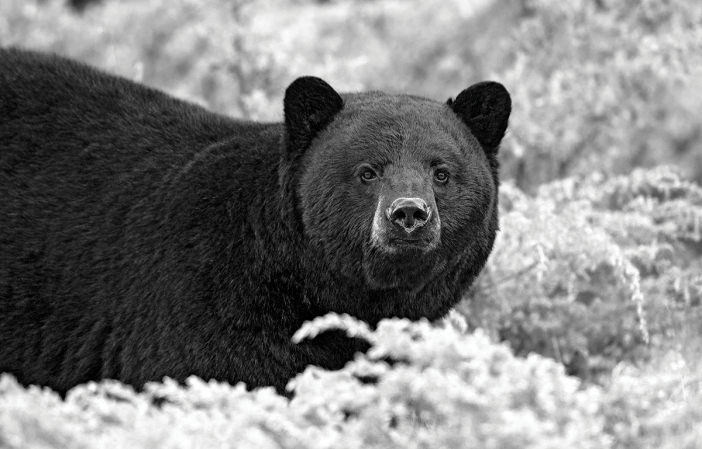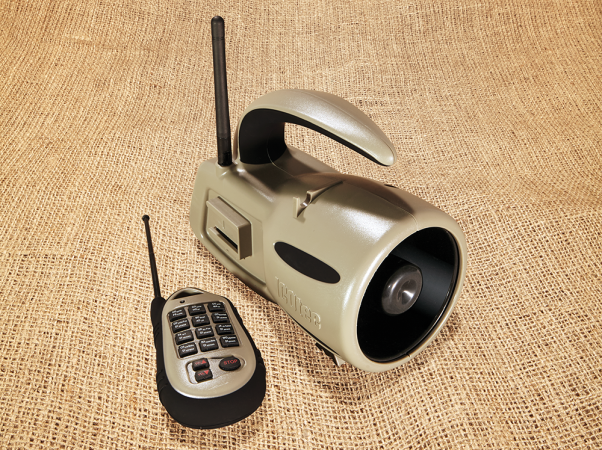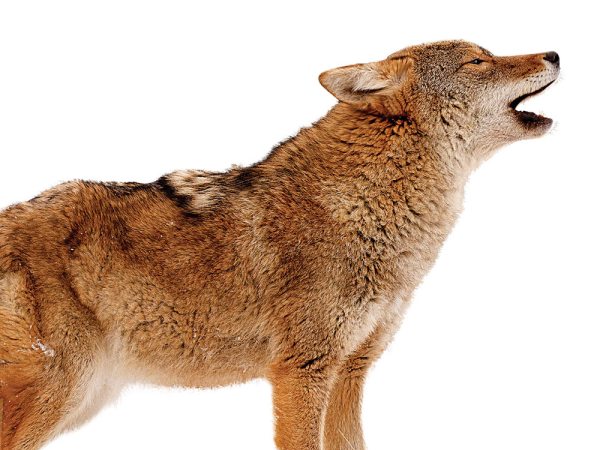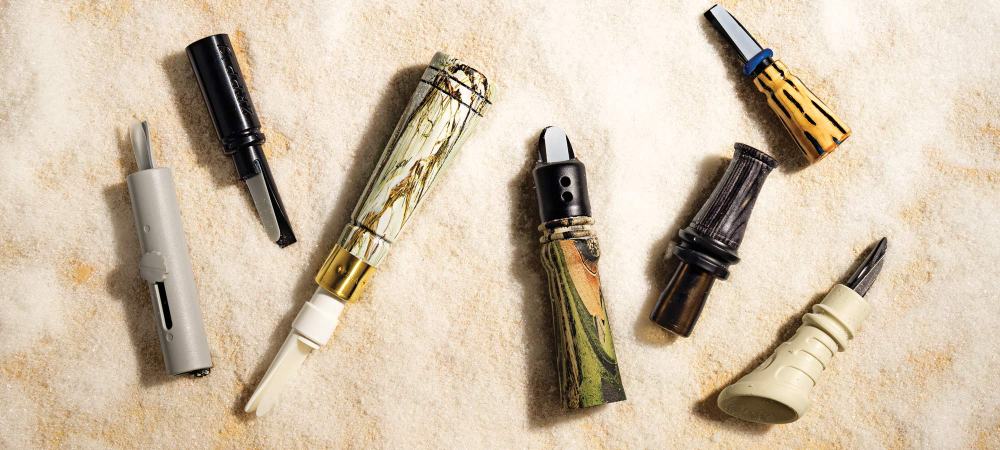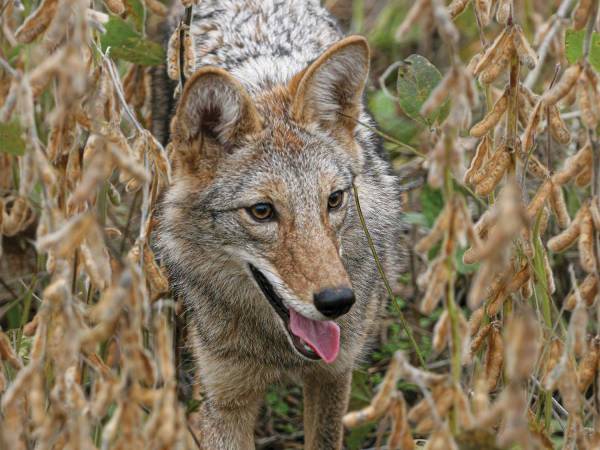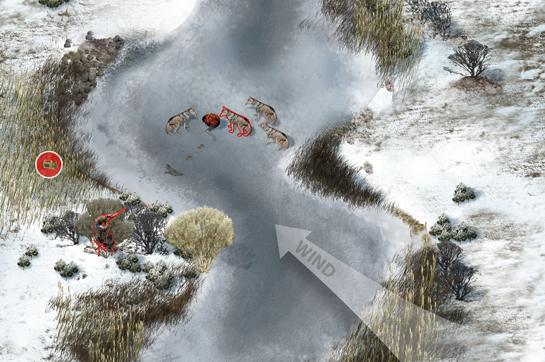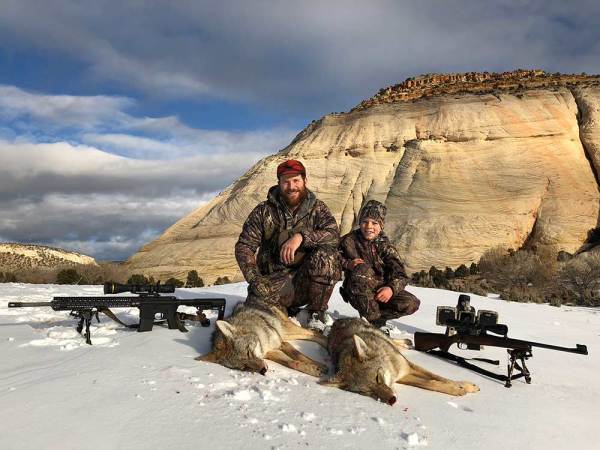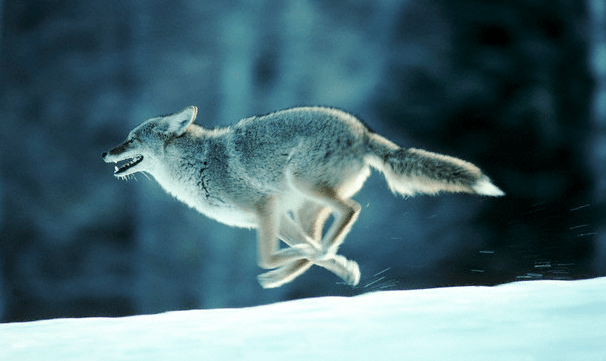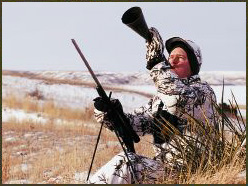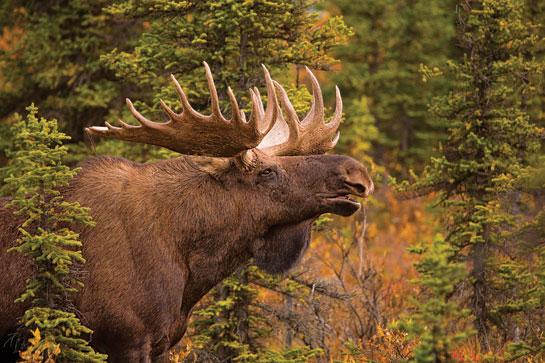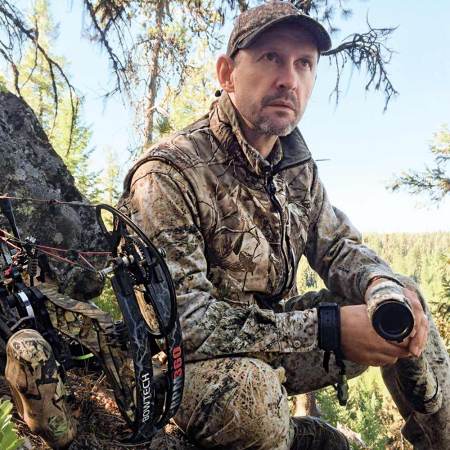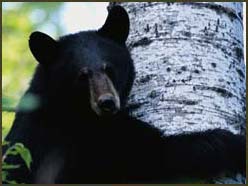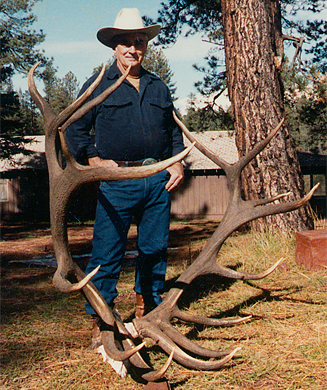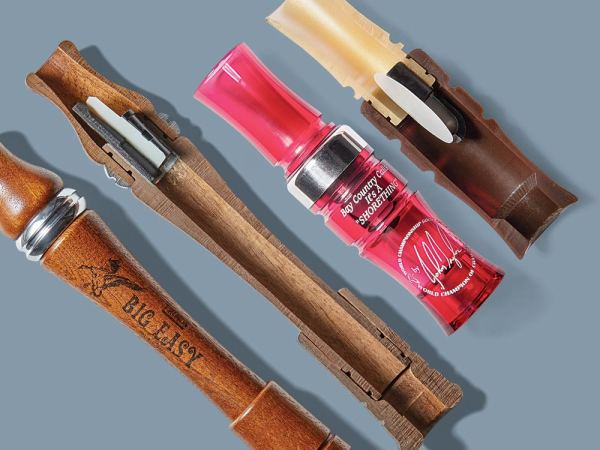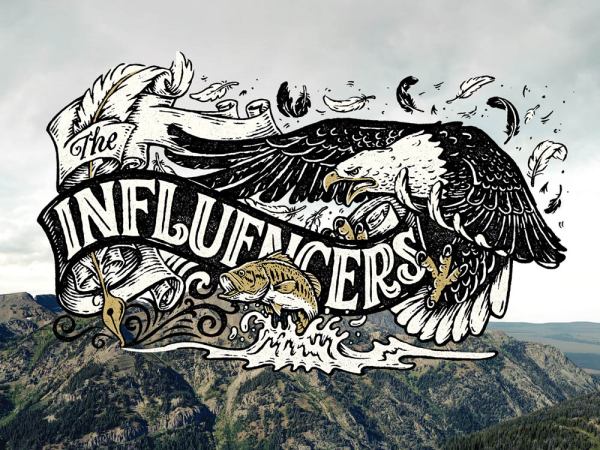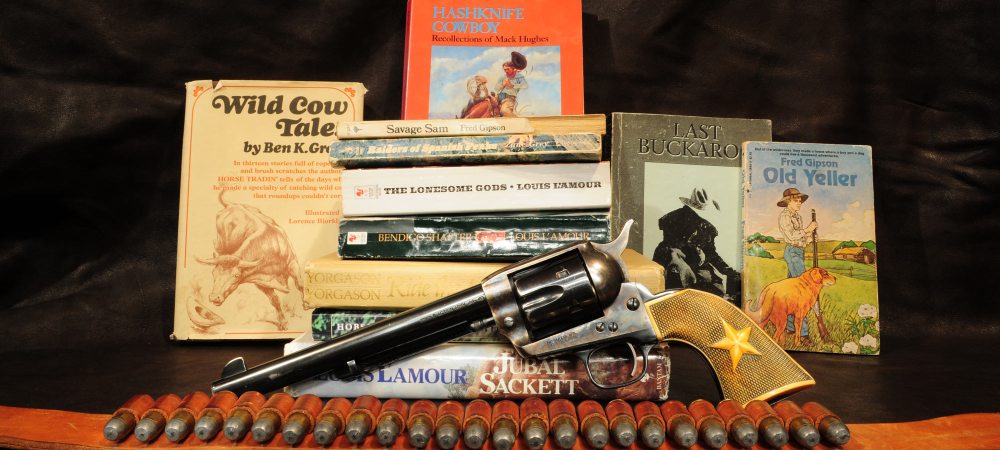It was a long, silent drive back from their first coyote hunt together. Garvin Young didn’t say a word on the 1½-hour drive. Al Morris was uncharacteristically quiet as well. They were participating in the Utah state coyote hunting contest in preparation for the 1997 World Championship Coyote Calling Contest (WCCCC) two weeks later. They’d hunted all day and killed exactly zero coyotes.
It had been nearly dark, and Morris was on the verge of dozing off when he heard Young lip-squeak, the prearranged signal that he’d spotted a coyote. A pair was coming in. Morris settled behind his rifle, aimed, squeezed the trigger, and…click. No cartridge in the chamber.
The coyotes got away.
“That was the first time we’d ever hunted together,” Morris says. “I clicked on that pair. He was disgusted with me.”
“The least you could’ve done is load your gun,” says Young. “I was thinking, Great. This is going to go well in two weeks.”
Actually, it did. They won.
“That was a blessing and a curse,” says Morris, “because we thought it was easy. It took us 11 years to win it again.”
They won for a second time in 2007, then again in 2008, and they won their fourth world title in 2016. In the 20 years they’ve competed in the WCCCC, they’ve placed in the top ten 18 times.
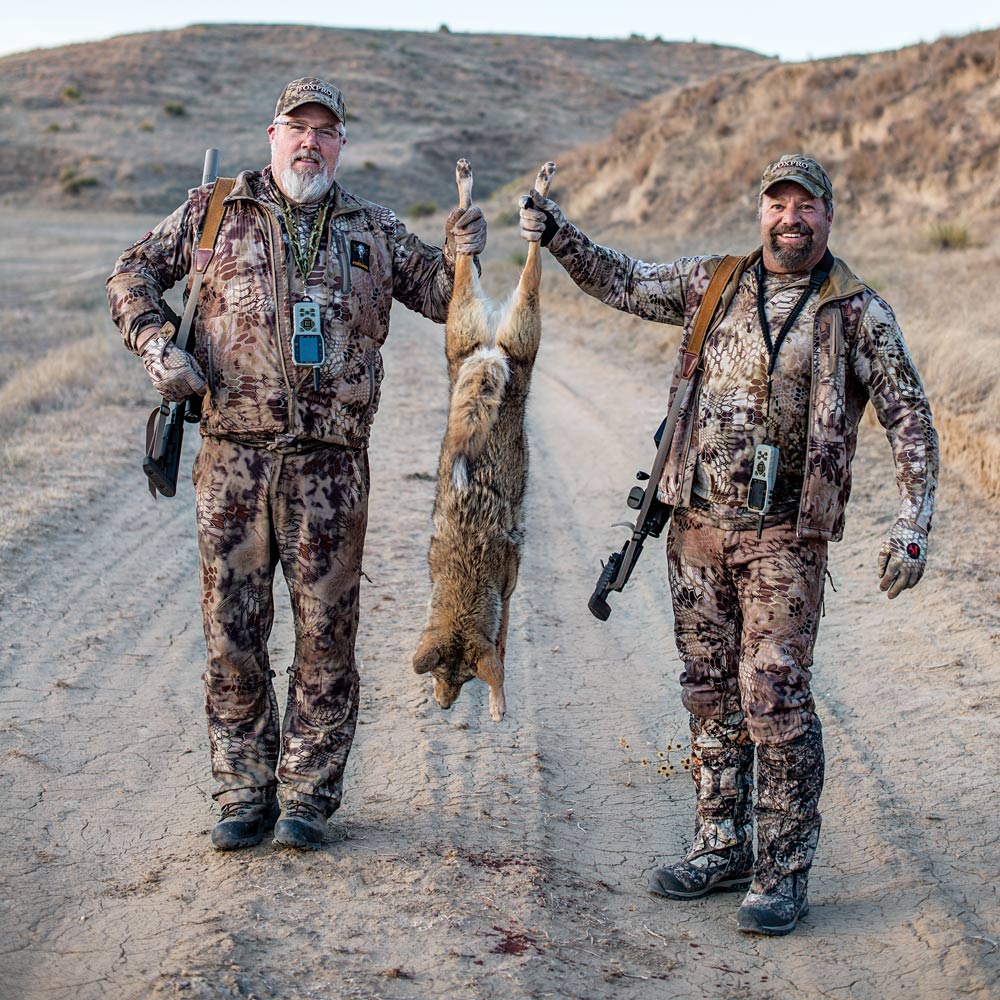
In 2016, Young was named Predator Caller of the Year, and Morris was inducted into the organization’s hall of fame. He’s only the second inductee, after legendary predator hunter and WCCCC founder Bill Countess. Two months after their 2008 WCCCC win, Morris won the Rocky Mountain Elk Foundation World Elk Calling Championship, making him the only adult to hold two world-championship calling titles at the same time.
Over most of their 20 years together, Morris has made a full or partial living out of calling and killing coyotes. He is now a full-time pro staff member for Foxpro calls. Young, a Foxpro Elite Predator field staffer, runs his own concrete-lifting business in Clinton, Utah, but he joins Morris for all the big hunting competitions.
Calling in a few coyotes over the course of a season can be tough, but to call scores of the wary predators into range every year requires a deep knowledge of coyote behavior and habitat preferences. To do it for two decades on the competition circuit, against the best predator hunters on the continent, requires an inexhaustible work ethic, teamwork, and all the senses of an apex predator.
After all that time in the field, Morris and Young are still at times mystified and left shaking their heads after being outwitted in the battle of wits and skills between predators.
“Coyotes have always intrigued me by the way they can adapt to any situation,” Young says. “They are incredibly smart, and, for the most part, they learn quickly from their mistakes. That’s why when one is missed, it’s a lot harder to get him to play the game the next time you call.”
A Dubious Debt
The most decorated partnership in competitive coyote calling got its start when Young’s cousin, Chopper (his given name is Everett Hudson Miller III), spotted 14 coyote hides in the back of Morris’ pickup upon the latter’s return from a solo hunt in Nevada.
“Chopper started grilling me about where and how I did it,” says Morris. “I told him I called in 28 and killed 14. Chopper asked if I knew his cousin, Young. Of course I did. We went to high school together in Springville, Utah. He’s a year older, but we both played trumpet in the high school band. I hadn’t spent much time with him in the field, but Chopper told me that Young needed a partner for the world championship.
“He said the world champions killed 22 in a day and a half. I said they’re damn liars,” Morris says. “That’s impossible. I was in the best coyote-hunting area ever and it took me three days to call in 28 of ’em.”
Chopper looked at Morris and said, “Well, maybe they’re just better coyote hunters.”
That lit a fire under Morris, now 51, who has a competitive streak about a mile wide. If anything, Young, 52, might be even more competitive. The challenge bonded the two into a team.
With an unprecedented four WCCCC buckles, Morris and Young now laugh about that click on their first hunt, but neither holds back if the other makes a misstep.
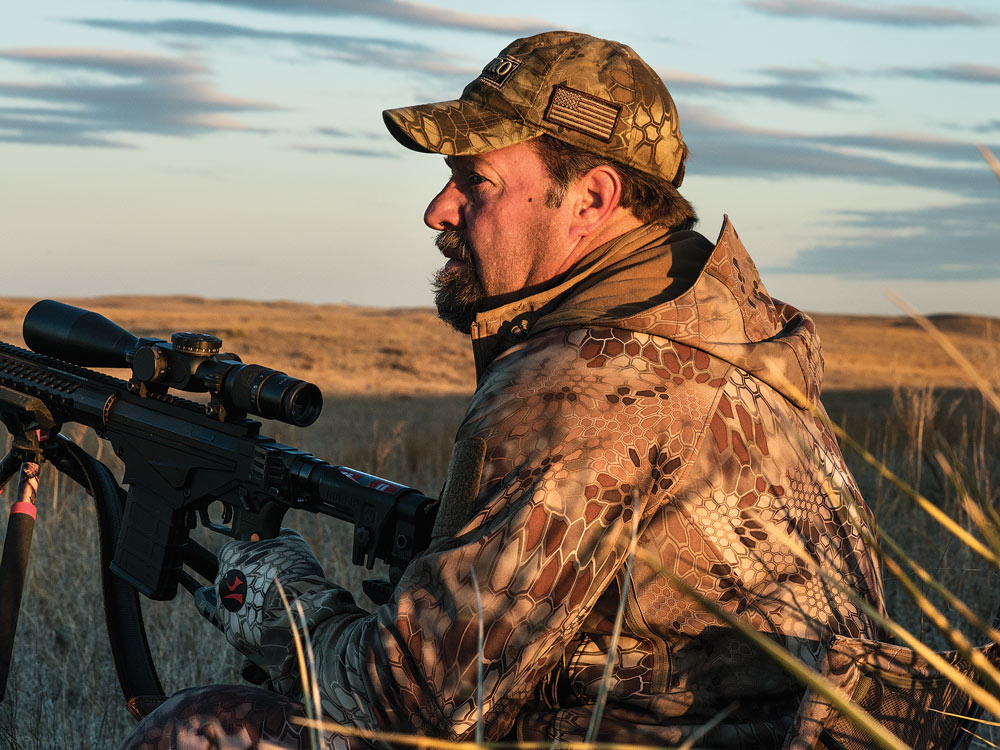
Verbal Barbs
During a debriefing after an unsuccessful stand with Imperial, Neb., outfitter Clay Owens, Young observes that Morris had sat too high on the hill, where he may have been “sky-lighted” by incoming coyotes. Young reminds him of the ridge-sitting incident several times over the next couple of days.
Morris is gregarious and outgoing, a storyteller, comfortable in the spotlight. Young is reticent and endlessly patient, waiting for an opportunity for a verbal ambush.
“Garvin doesn’t speak much,” Owens says, “but when he does, it’s usually a zinger.”
Owens, who runs Prairie Ghost Outfitters, is a longtime friend of both Morris and Young. At one stand he spots four coyotes sitting on a distant hillside, uninterested in Morris’ calls.
“Apparently, they don’t care about your résumé,” Owens quips. “The coyotes probably saw the pickup and said, ‘That’s four-time world champion Al Morris. Don’t go down there. He’s killed more coyotes than parvo.’”
Morris and Young argue and criticize each other, but they both know the back-and-forth serves a purpose—to help them improve.
Early in their contest career, there were arguments. Young recalls an incident when, in an effort to beat Young to a shot at an incoming coyote, Morris leaned his rifle over a fence post, pushing a foot of his bipod into his own line of fire. Morris’ bullet hit the bipod leg, showering him with metal shards. The coyote ran off. Morris was bleeding. Young was unsympathetic. “He shoots a coyote out from under me and then misses? Are you kidding me?”
When they started, Young was the better shot, though Morris says that through practice and in-the-field experience, he’s caught up. Early on, Young did most of the calling with a mouth call.
“Not that I couldn’t call,” Morris says. “We just had a lot of confidence when he blew that green Circe call. We won a championship, so why change?”
After a long day of calling, Young looked “like this,” Morris demonstrates, his lower lip protruding and drooping. “I called that his Circe lip.”
In those days, their calling was not continuous, but broken by periods of silence—and rest.
“Now, with electronic calls, we’ve gotten lazy,” Morris says. “We’re letting the electronics do all the work.”
Young says he’s come around to thinking continuous calling is best, especially in the competitions like the WCCCC, where points are won for the number of coyotes you can kill, not how natural your mouth call sounds. “A lot of guys don’t give it any break whatsoever,” he says. “They say if that sound has triggered a coyote, and that coyote is coming, why change anything? Makes sense.”
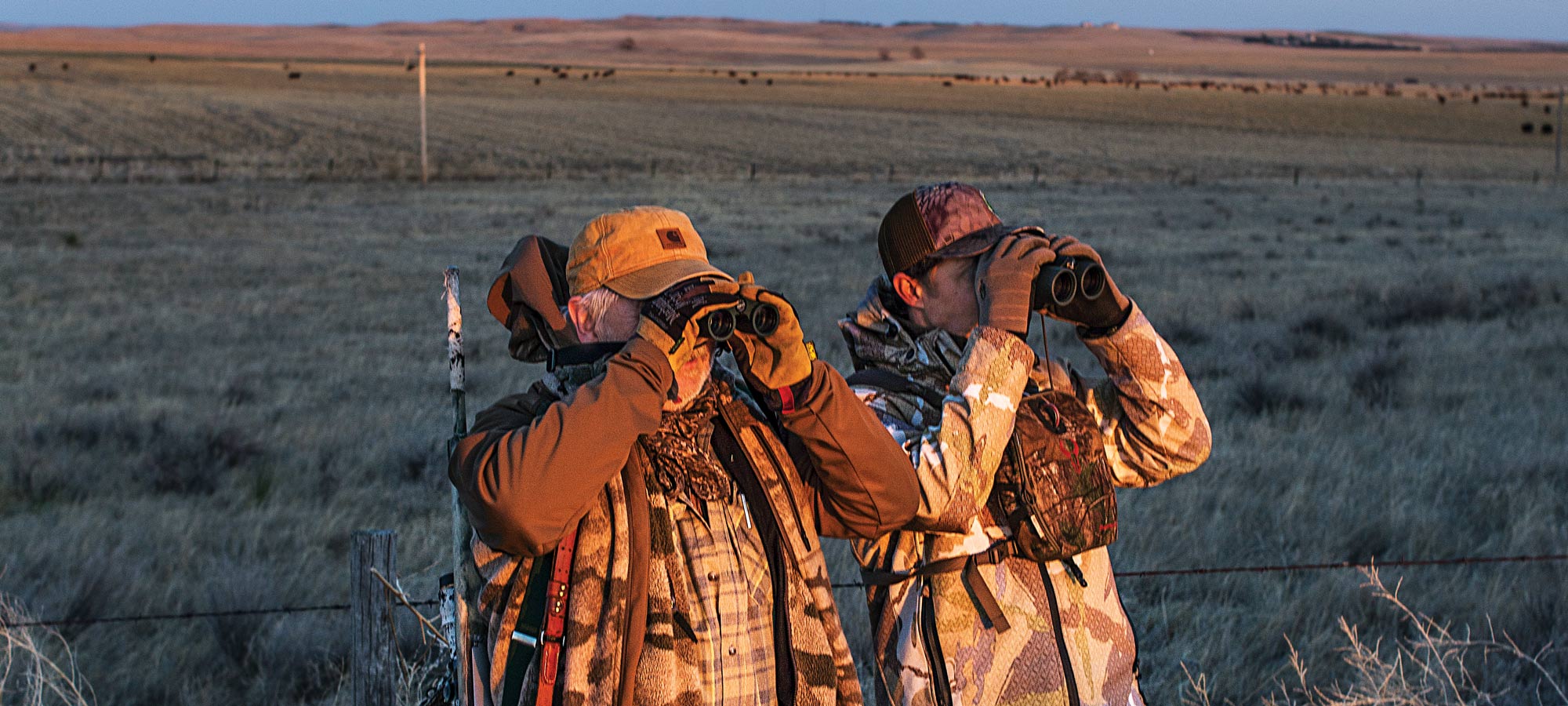
Night Crawlers
The first night I hunted with Morris, Young, and Owens, we spent the evening driving around Owens’ hunting territory in Chase County, stopping to howl, hoping to locate coyotes for the next day’s hunt. At each stop, Morris swung a Foxpro call over his head in a windmill motion, as it broadcast a series of howls and yips. He added to the serenade with howls from his mouth diaphragm call.
When they park to make a stand, you’d better grab your gear, chamber a round (remember the click story?), and get going, because Morris and Young are already on their way. Their competitive style has become habit, and they don’t waste time.
“We actually sat down and had a heart-to-heart about our competiveness, that any criticism we give each other is just corrective,” Young says.
“It’s not personal,” Morris adds.
They often talk over each other, finishing each other’s sentences or to emphasize a point. “It’s nothing personal,” Young continues. “We just want to win. That’s why it works, because I realize if he’s chewing my ass, he’s not trying to say I’m stupid or I don’t know how to hunt a coyote—just, hey, let’s set up this way.”
“We’ve seen other teams when it got personal,” Morris says. “They get upset at each other or their egos get in the way and it becomes unfixable. We’ve seen some great teams come and go. If they had been able to stick together, they would have given us a run for the money.”
Their conversations are lively but rarely profane. “My hell!” is about as strong as exclamations get. Ribbing is part of the relationship. “If he doesn’t razz me, I think there’s something wrong, that he’s mad at me over something,” Morris says.
If they sound like a long-married couple, well, it’s kind of like that. They leave home to scout for the World Championship competition on Black Friday, the day after Thanksgiving. The World Championship is held each year on the first Friday and Saturday in December. The WCCCC is an invitation-only contest, rotating locales every two years. The winning purse can total $10,000 in cash and prizes.
“We do Thanksgiving dinner with the family and then hit the road,” Morris says. They aim to scout for at least 14 days leading up to the contest, driving the hunting area, looking for coyote sign, and howling day and night—especially night, when they’ll stop every couple of miles to howl, their tactic for locating packs. They do it throughout the night, stopping at the same spots at different times, eating “motor food”—pre-cooked meals wrapped in foil and heated on the pickup manifold—and grabbing a little sleep here and there, staying out for three or four days before the need for a shower sends them to a motel for a night.
They’ve shared hundreds of hours and thousands of miles, and talked about every aspect of their lives. “There’s nothing either of us has ever done that the other doesn’t know about,” Morris says.
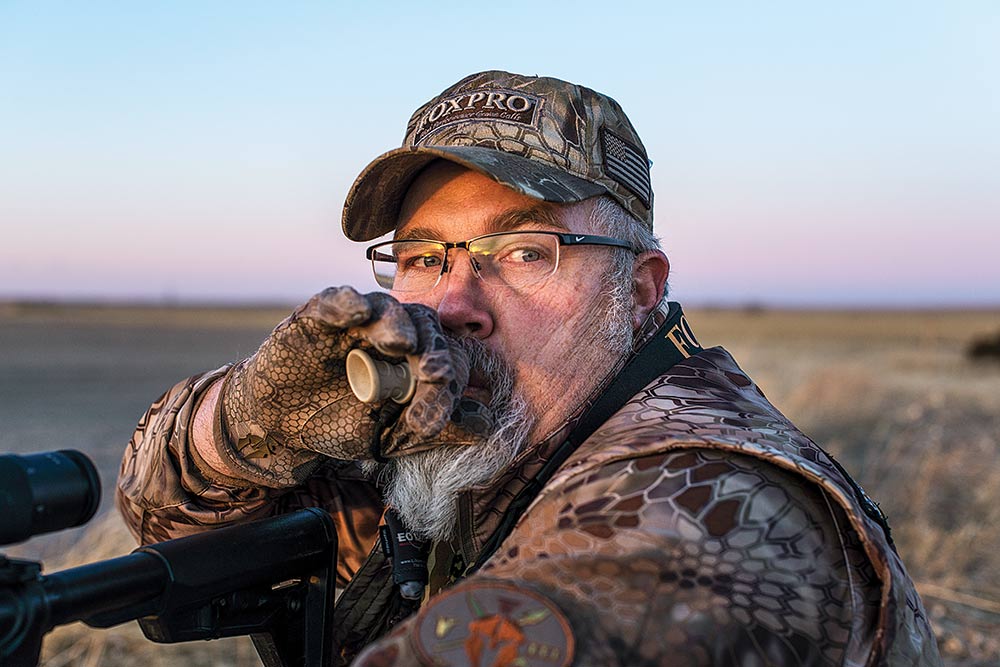
Fellowship of the Fur
In the field, they don’t waste time and energy deciding who will do what. Morris—with year-round, across-the-country coyote-hunting experience—suggests the sounds or mix of sounds for each stand and adds inflection with hand and diaphragm calls. Howling with a diaphragm is his favorite.
“It’s the right tone and pitch,” he says. “There’s not anything false.” The estrous yip and whimper are specialties. “Some people call it an estrous chirp. Coyotes don’t chirp. They ain’t birds.”
The duo is constantly experimenting, trying new gear and tactics. In seminars that he teaches, Morris often shares their winning strategy, much to Young’s chagrin. “I don’t know why he does it,” Young says. “Pisses me off.”
“Yeah, Garv gets mad at me all the time,” Morris says. “But I can tell people exactly what we do, and most aren’t willing to do what we do to be successful, and that’s the bottom line.”
Morris is in charge of logistics, finding roads and planning efficient looping routes that quickly get them close to the coyotes they’ve located by howling. Morris also has a photographic memory of past hunts; Young not as much.
“I’ve taken him to places where I’ve asked, ‘Don’t you remember killing a coyote here 10 years ago?’” Morris says. “And he goes, “I’ve never been here a day in my life.’ So I walk him out, sit him down, reach down, and hand him…”
Young picks up the story: “He says, ‘Doesn’t this brass look like yours?’ Tinggggg.” Young pantomimes flicking the case at him.
“It was from the cartridge he’d killed the coyote with 10 years earlier,” Morris says, laughing.
When they enter a calling area, they scan and process terrain features by instinct and experience, moving quickly to shooting positions. During pre-competition scouting, they preselect not only stand locations but exactly where each is going to sit, in order to approach quickly, set up, and start calling on days when they’re trying to not only outwit coyotes, but also beat the clock.
Morris and Young think alike, looking for a clump of sage or yucca, something to sit in front of to break up their outline. They try to predict how coyotes might approach so they can give themselves a clear line of sight for both spotting coyotes at a distance and shooting them when they get in range. But they select independently, not always agreeing with each other’s reading of the terrain.
“We’ll come up to a spot, and I’m thinking we should sit here and he thinks we should sit over there,” Young says.
“It’s amazing,” Morris says, picking up the thought, “how he sees a stand is completely different than the way I see it. But I don’t even question it. If that’s the way he sees it, that’s the way we sit it.”
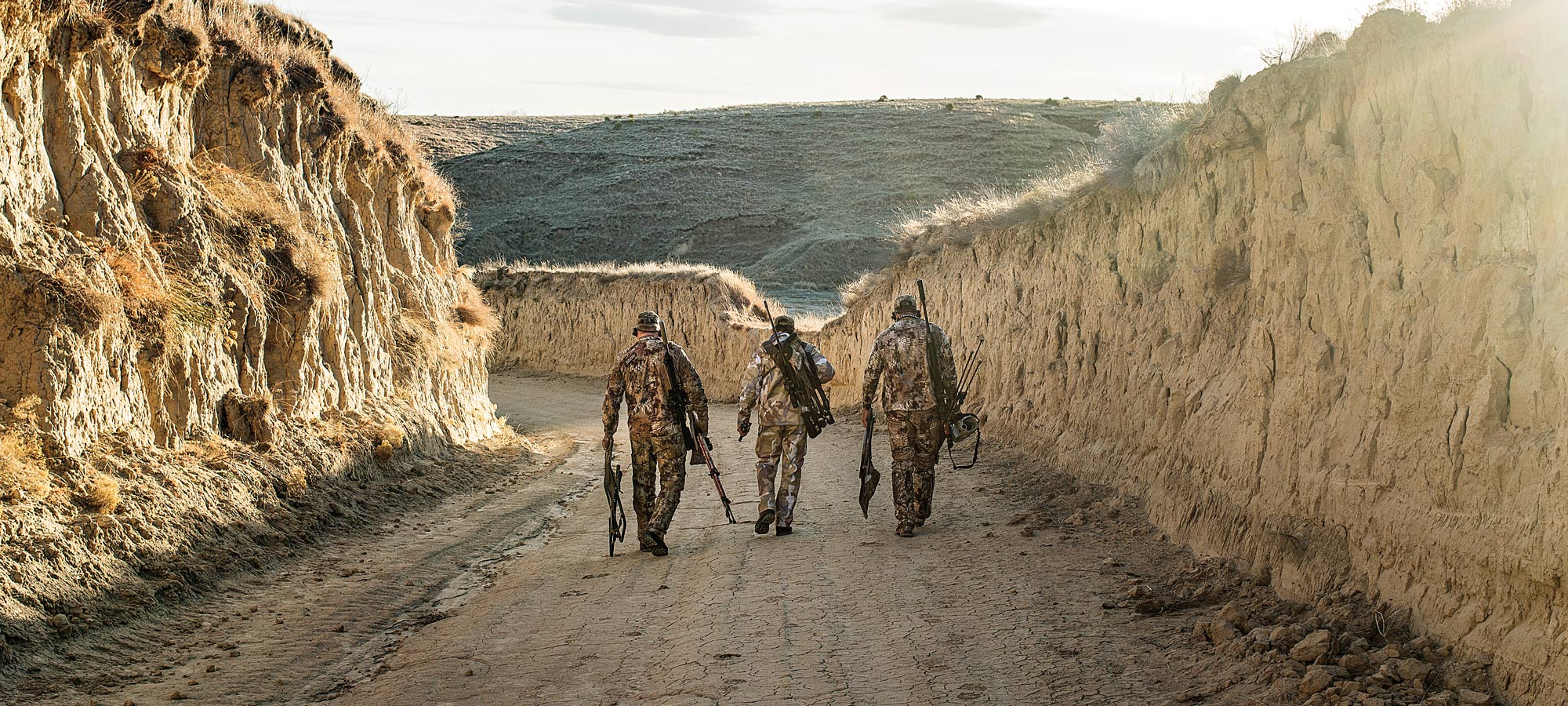
Hunting with a Purpose
It’s fairly easy to explain why we hunt deer, or elk, or waterfowl. For the meat, mostly. But why does a subset of hunters pursue predators so intensely? It can’t be only for the fur, which Morris and Young sell to fund even more hunts. Coyotes taken during competitions are turned over to the organization, which sells the fur to help cover cash prizes.
The calling competitions, which are a way of measuring success, are part of the allure, says Morris, whose father died in 1999 at the age of 58 of an aortic aneurysm. At the time, Morris was working as a plumber, trying to pay the bills and fund his passion—hunting.
“My dad, who taught me everything about hunting, asked me if I liked what I was doing,” Morris recalls. “He said, ‘It’s time to chase dreams, son.’ That’s the last thing he ever said to me. When he died, I told my wife, ‘Hang on. We’re chasing dreams.’ And I guess we still are.”
Young and Morris both acknowledge the debt they owe to those who gave them advice along the way. Morris remembers his father telephoning call-making pioneer Wayne Carlton, doubting the claims that Carlton attributed to the then-new diaphragm call for elk hunting. Carlton ended up teaching Morris how to use a diaphragm call over the phone, brief advice that essentially led to Morris’ career.
Read Next: 7 of the Best Predator Mouth Calls
The second time Morris blew a diaphragm call in the wild, nine coyotes—two adults and seven pups—responded to the call.
“That experience changed me forever,” Morris says. “To see the nine of them run in to me and, with a precision maneuver, surround me. The coyote took on a new space in my heart. Fear turned to excitement, which turned into respect, and it fueled my desire to repeat that experience. That has fueled a desire to prove that I can do this as well or better than most.”
Morris and Young know the clock is ticking. They’ve seen many friends and mentors, their heroes of predator calling, grow older. They know the day is coming when they’ll have to hang up their competitive calling and leave the road trips and all-night recon missions behind.
“It’s hard to win,” Young says. “It’s even harder to win consistently.”
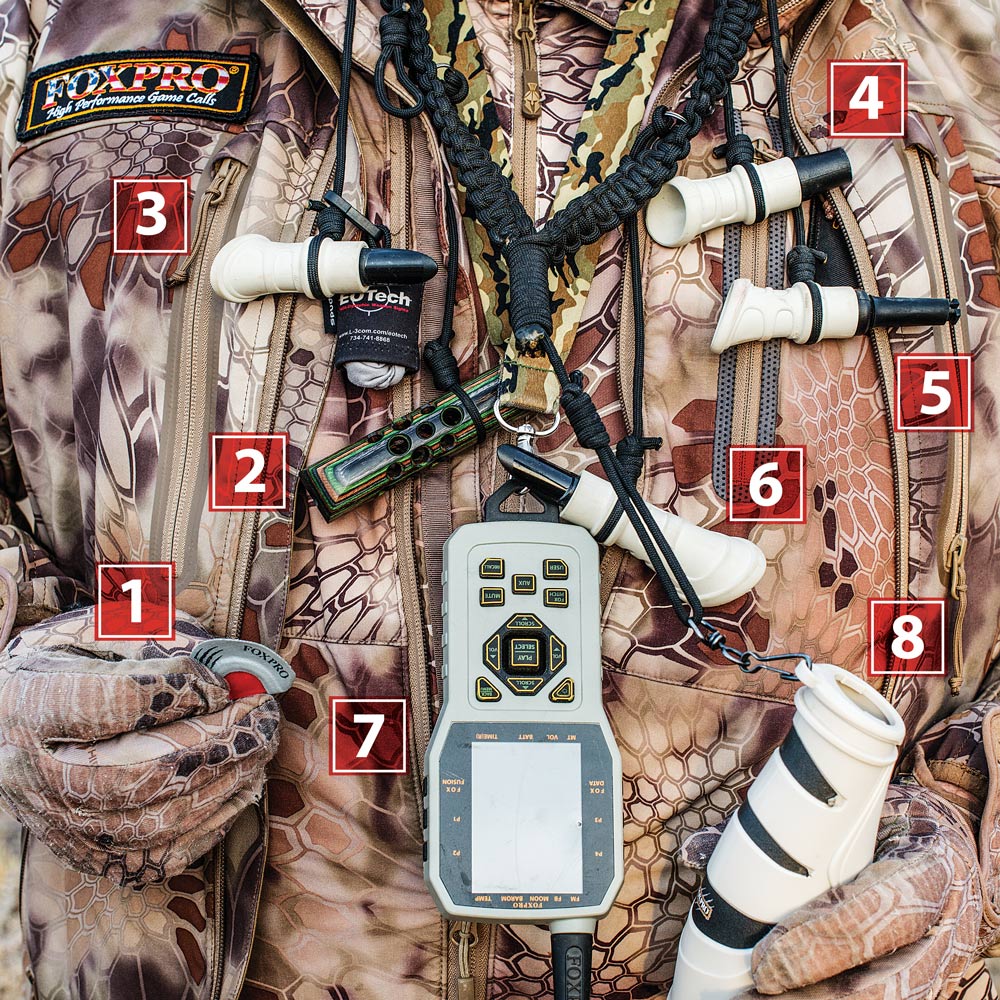
Al Morris’ Arsenal of Calls
A close look at the coyote-calling lanyard of world-champion caller Al Morris. All calls by Foxpro unless noted.
- Young Gun Diaphragm makes yips and whimpers.
- Backstabber makes rabbit and rodent calls.
- 4K9 Pup open-reed call makes barks, howls, and prey sounds.
- Tantrum makes high-pitched prey calls.
- Bite-reed Kamikaze produces high-pitched calls.
- Open-reed 4K9 is used for coyote vocalizations.
- remote for the TX1000 Electronic Call.
- Mr. Mouthy Horn broadcasts howls and barks.
